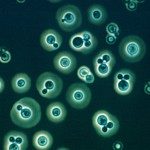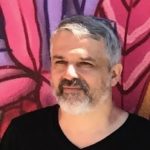Link to Pubmed [PMID] – 26322026
Front Microbiol 2015;6:798
Cryptococcus neoformans is an opportunistic fungal pathogen that has several well-described virulence determinants. A polysaccharide capsule and the ability to produce melanin are among the most important. Melanization occurs both in vitro, in the presence of catecholamine and indole compounds, and in vivo during the infection. Despite the importance of melanin production for cryptococcal virulence, the component and mechanisms involved in its synthesis have not been fully elucidated. In this work, we describe the role of a G1/S cyclin (Cln1) in the melanization process. Cln1 has evolved specifically with proteins present only in other basidiomycetes. We found that Cln1 is required for the cell wall stability and production of melanin in C. neoformans. Absence of melanization correlated with a defect in the expression of the LAC1 gene. The relation between cell cycle elements and melanization was confirmed by the effect of drugs that cause cell cycle arrest at a specific phase, such as rapamycin. The cln1 mutant was consistently more susceptible to oxidative damage in a medium that induces melanization. Our results strongly suggest a novel and hitherto unrecognized role for C. neoformans Cln1 in the expression of virulence traits.

